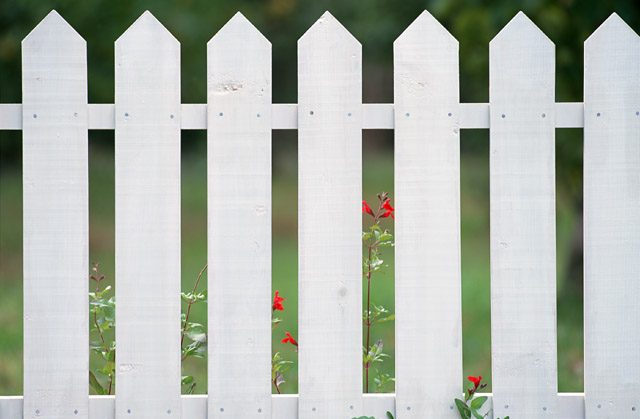Are timber and picket fences worth the effort?
When you think of the quintessential ‘dream home,’ one element that’s always present is the traditional ‘white picket fence’. Timber fencing has been a staple in homes of all shapes and sizes for centuries. But now that more modern and dynamic fencing materials are freely available on the market, is timber fencing still a top […]

When you think of the quintessential ‘dream home,’ one element that’s always present is the traditional ‘white picket fence’. Timber fencing has been a staple in homes of all shapes and sizes for centuries. But now that more modern and dynamic fencing materials are freely available on the market, is timber fencing still a top choice, or is it an old relic that we should leave behind?
Benefits of timber fencing
That said, timber fencing has lasted through the generations for a reason. Here are some of its positive qualities:
 Easy installation
Easy installation
One of the main advantages of timber and picket fences is easy installation, especially taking the vastness of the Australian landscape into consideration. If you live in a remote or rural area, it’s easier to transport lightweight timber fencing materials compared to steel or other metals. Wood is also a simple and versatile material to work with, making it the top choice for those going down the DIY fencing route.
Traditional style
If you want a traditional look for your home, then you should go for the good old picket fence. The benefit of these types of fences is that they never go out of style. Timber and picket fences are quite timeless.
Easy alteration
Another pro of timber and picket fences is that they can easily be styled in many ways. Painting the fence or adding to it is easy because of the versatility of wood and its relatively low price.

Drawbacks of timber fencing
Although some aspects of timber fencing are great, it can also be a lightweight and flimsy material. Timber fencing is not very durable. Unlike aluminium or steel fencing, timber and picket fences are very susceptible to rotting from both pests and weather. Wooden fencing can become infested by termites and other pests. This is especially likely if you insert the posts straight into the ground, which is how picket fences are often installed.
This makes timber a poor choice if a high level of security is required from your fencing and gates.
Timber also tends to discolour and warp after some time, leading to cracks in the fence and gaps between the slats that will only widen over time. Therefore, it’s more likely that you’ll need to replace or fix it every few years. A high level of maintenance is also required, such as treating, painting and varnishing annually.
Alternatives
Of course, over the past few centuries, other more modern materials have become a more popular option for fencing as they have become easier and cheaper to source.
Due to the constant maintenance timber and picket fences require, more and more homeowners are going for aluminium and steel fencing. These types of fences are relatively easier to maintain due to their strength and great durability. Aluminium is even resistant to rust, making it the best option for seaside properties. Metal fencing provides better security, it isn’t prone to pests, and it is able to withstand extreme weather conditions.
Smartwood
For those who want the best of both worlds – the timeless look of timber with the durability of metal – take a look into the option of Smartwood fencing. Smartwood looks much like wooden fencing, but it is actually aluminium coated in a wood-look coating. It is usually nearly impossible to see the difference for the untrained eye.
And for those after traditional picket fences with more durability, there is also another option. Picket fences are always thought of in their original white tone, so why not try out picket-style white fencing made from aluminium?
About the Author
Matthew Suter is Managing Director of Fencemakers, a leading provider of Gates and Fencing in Perth, Western Australia. Find Matthew on Google+.